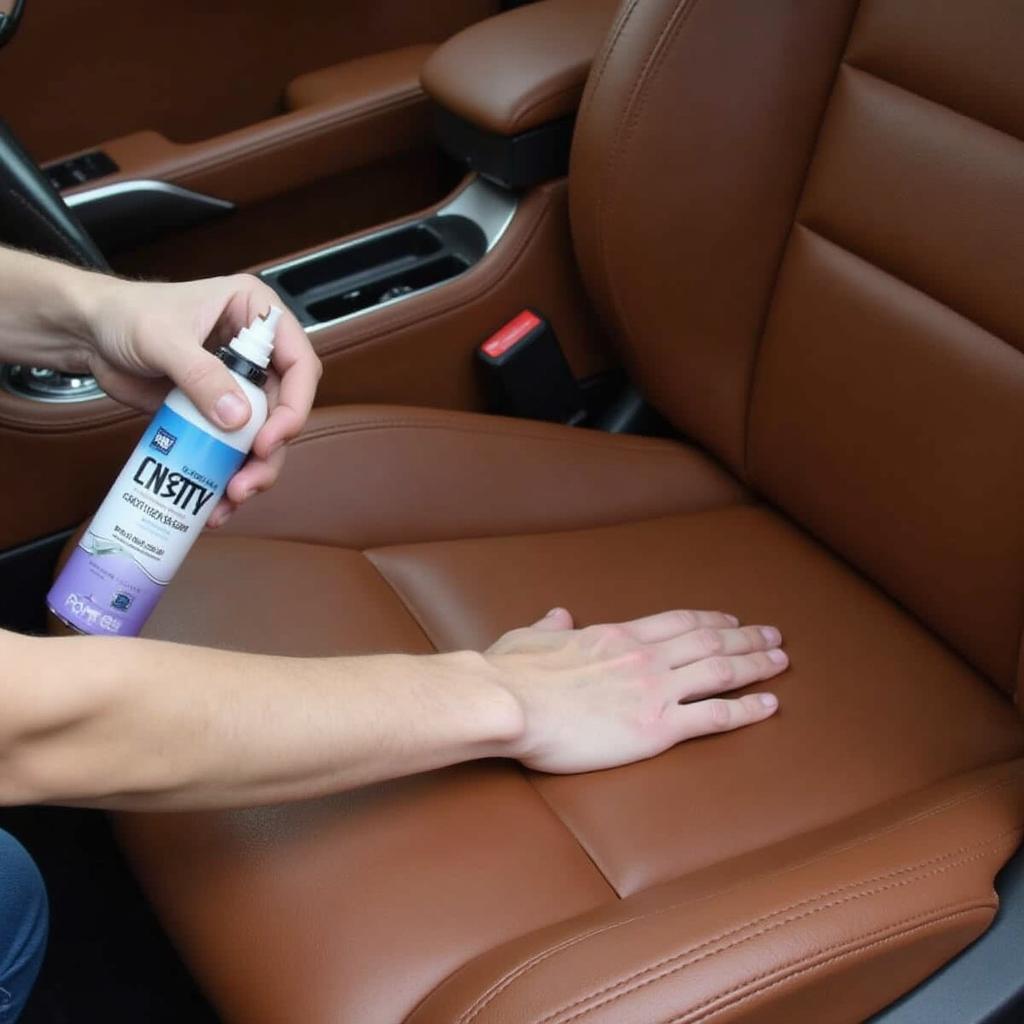Owning a car with brown leather seats is a mark of class and sophistication. But over time, even the highest quality leather can show signs of wear and tear. Scratches, cracks, and fading can mar the luxurious look of your car’s interior. This guide will provide you with practical steps on how to repair brown leather car seats, restoring their beauty and extending their lifespan.
Understanding Leather Damage
Before diving into repairs, it’s important to identify the type of damage your brown leather car seats have sustained.
- Scratches: These are superficial marks that appear on the leather’s surface.
- Cracks: These are deeper than scratches and occur when the leather dries out and loses its flexibility.
- Fading: Prolonged exposure to sunlight can cause the leather’s color to fade.
- Stains: Spills and accidents can leave unsightly marks on your leather seats.
Gather Your Materials
To effectively repair your brown leather car seat, you’ll need the right tools and materials:
- Leather cleaner: Opt for a pH-neutral cleaner specifically designed for automotive leather.
- Leather conditioner: Choose a high-quality conditioner that matches the color of your seats.
- Soft cloths: Microfiber cloths are ideal as they are gentle on leather and prevent lint.
- Leather repair kit: These kits are available in a variety of colors and typically contain a filler compound, colorant, and finishing cream.
- Applicator tools: Sponges, brushes, and cotton swabs are helpful for applying cleaners and repair products.
- Heat gun or hairdryer: (Optional) Useful for speeding up the drying process of certain repair products.
Step-by-Step Repair Guide
Follow these steps to repair your brown leather car seats:
-
Clean the Seats: Begin by thoroughly cleaning the affected area with a leather cleaner and a soft cloth. This removes dirt, grime, and any residue that could interfere with the repair process.
-
Assess the Damage: Take a close look at the damage to determine the appropriate repair method.
-
How to repair a tear brown leather car seat: For tears, you’ll need a leather repair kit that includes a sub-patch to provide support and prevent the tear from widening.
-
Repair tear in leather car seat: Smaller tears might require a liquid leather filler to bridge the gap and restore a smooth surface.
-
-
Apply the Repair Product: Follow the instructions provided with your specific repair kit. Generally, this involves applying a filler compound to cracks or deep scratches, allowing it to dry, and then sanding it smooth.
-
Color Matching: Once the filler is dry and sanded, it’s time to color match. Use a leather dye that closely matches the color of your seats. Apply the dye in thin, even coats, allowing each coat to dry completely before applying the next.
-
Condition the Leather: After the dye has dried, apply a leather conditioner to the entire seat. This helps to rehydrate the leather, prevent future cracking, and restore its natural luster.
 Conditioning a Brown Leather Car Seat
Conditioning a Brown Leather Car Seat
Expert Insights
“Many car owners underestimate the importance of regular leather care,” says John Smith, a seasoned automotive leather specialist with over 20 years of experience. “Using a quality leather conditioner every few months can significantly prevent cracking and fading, keeping your seats looking their best for years to come.”
Preventing Future Damage
Prevention is key to maintaining the pristine condition of your brown leather car seats:
- Regular Cleaning: Clean your seats regularly with a pH-neutral leather cleaner.
- Conditioning: Use a leather conditioner every few months to keep the leather hydrated.
- Sun Protection: Park your car in the shade or use a sunshade to prevent UV damage.
- Prompt Spill Cleanup: Address spills immediately to prevent staining.
Conclusion
Repairing brown leather car seats is an achievable DIY project that can save you money and restore the beauty of your car’s interior. By following these steps and incorporating preventative measures, you can enjoy luxurious, comfortable leather seats for years to come.
FAQs
Q: Can I use household cleaners on my leather car seats?
A: It’s best to avoid using household cleaners as they can contain harsh chemicals that may damage the leather. Always opt for cleaners specifically designed for automotive leather.
Q: How often should I condition my leather car seats?
A: It’s generally recommended to condition your leather seats every 3 to 6 months, depending on the climate and how often the car is used.
Q: Can I repair a cigarette burn in my leather car seat?
A: While minor cigarette burns might be improvable, deep burns often require professional repair or seat cover replacement. You can learn more about repairing burns in our guide on [how to repair cigarette burn in vinyl car seat](https://carrepairon.com/how to-repair-cigarette-burn-in-vinyl-car-seat/).
Q: Can I dye my leather car seats a different color?
A: Yes, you can dye your leather car seats a different color, but it’s a more complex process than simply repairing scratches or cracks.
Q: How can I prevent my leather car seats from getting too hot in the sun?
A: Parking your car in the shade, using a sunshade, and keeping your windows slightly cracked to allow for ventilation can help prevent excessive heat buildup.
Need further assistance with your car repairs? Our expert team is available 24/7 to answer your questions and provide guidance. Contact us via WhatsApp: +1(641)206-8880 or email: [email protected].
Looking for more car repair tips and guides? Visit our website CarRepairOnline.com for a wealth of information on car maintenance, repairs, and more!


